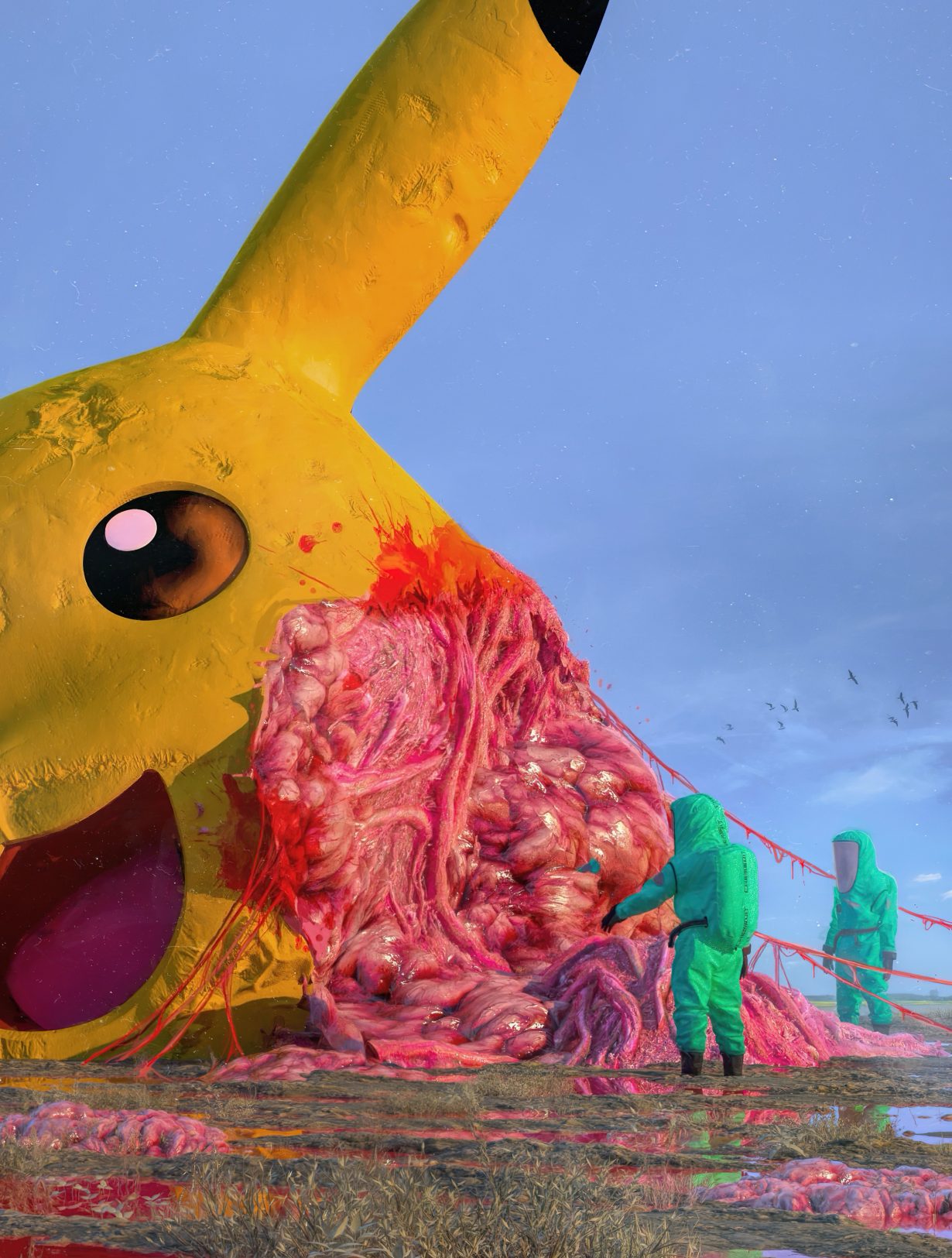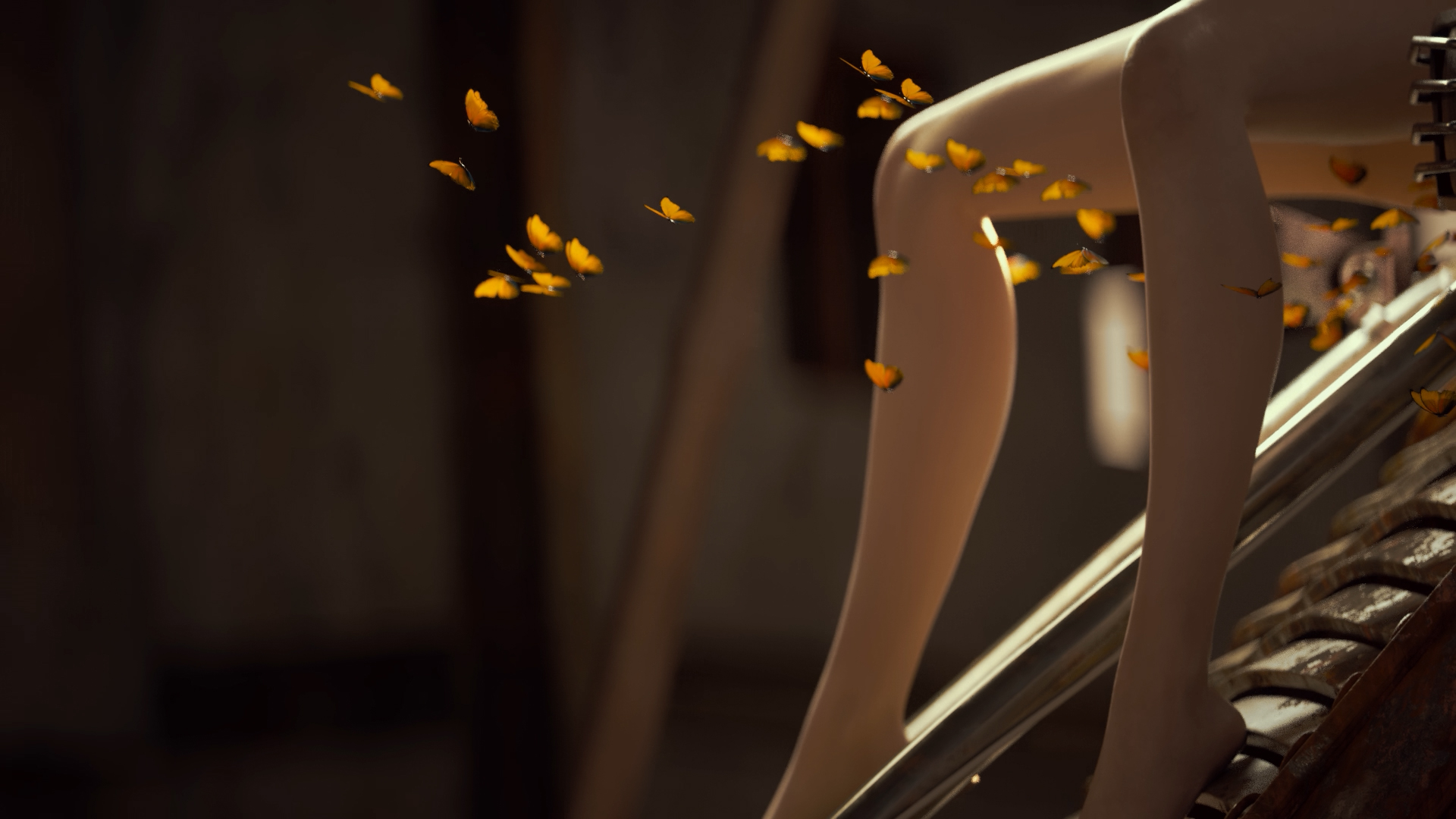What Madonna’s collaboration with Beeple tells us about the status of human-centred reality
The development of NFTs as a platform for a kind of feral, chaotic experiment in visual culture has produced some strange works of late. The recent NFT collaboration between pop queen Madonna and NFT king Mike Winkelmann – the artist known as Beeple – being one of them. The three videos that comprise Mother of Creation (2022) aren’t exactly subtle. In three different, vaguely dystopian science-fictional settings, a reclining, naked Madonna CGI avatar gives birth to things other than human babies: a great, verdant tree, quickly covered in lichen and blossoms; a cloud of fluttering amber butterflies; and perhaps strangest of all, a cohort of metallic centipede robots. All to be auctioned as fundraisers for women’s charities, on NFT site SuperRare.
Accompanied by languid voiceovers by Madonna reflecting on being a woman, lover and mother, on being the “source of existence”, her videos have been met with incredulity and not a little pearl-clutching, with one scandalised Hyperallergic opinion-writer huffing as to whether or not Madonna was ‘potentially rich enough to just donate to charity without making literally everyone look at her vagina’; the assumption being that such a spectacle was a bit shocking and gratuitous, even by meme-culture standards.
The shrill tone of reactions both on social media and in the art press might be taken as the usual pop-culture circus that still attaches to the Material Girl – celebrities ‘doing’ art are never taken too seriously on either side. But in terms of its imagery, it’s not alone in the history of art by female artists putting a feminist slant on celebrating female corporeality – Monica Sjöö’s seminal painting God Giving Birth (1968), Judy Chicago’s installation The Dinner Party (1979) and Helen Chadwick’s Of Mutability (1986) come to mind.


So something else, other than a kind of squeamish misogyny or anti-celeb snobbery, bugs the reaction to Mother of Creation. For sure, it may be that millennial culture is less impressed with this boomer feminist take on womanhood, nakedness and procreation, or more intolerant of the augmented, porn-adjacent image of the idealised body Madge adopts as her avatar. But there’s perhaps another aspect to it, one that incorporates these body politics into something bigger. Something to do with the perverse nature of corporeality as such, as it figures in the phantasmagorical imagery of millennial digital art.
Maybe it’s a necessary paradox of this millennial digital imaginary that the human body should be one of its defining visual tropes, even while being represented in a state of transformation, transposition and disintegration. Digital avatars have an uncanny relationship to the physical body, standing in for it in virtual space, the correspondence between the two never really guaranteed. The real and its representation, in a visual culture in which rendered simulation now presents us with objects that appear more real than the real thing, no longer have a one-way relationship of dependence between one and the other.

Computer simulation that understands light, reflection, movement, weight, inertia, fluid dynamics and other emergent and organic processes is no longer representation. It’s a subtle if psychologically powerful shift in what we see in images and what we know of the real, material world. If visual culture could long depend on the technical medium to give us a visual clue to an image’s status as representational or imaginary – the texture and surface of painting, say, or the line of drawing, or the grain of the photograph, or even the primitive renderings of early CGI – the new digital images abolish all of that. Beeple’s Infected Culture, one of his infamous Everydays series from 2020, is a cynically comic rendition of this predicament, of how millennial visual-culture devours the historical past of images and imagination: in some marshy no man’s land, two figures in hazmat suits attend to the gigantic, battered and apparently dismembered head of what might have been a cartoon character, if it weren’t for the bloody entrails exposed where the side of its head has been torn away. The head is recognisable as that of Pikachu, lovable anime mascot of the Pokémon franchise since its inception in 1996.


If there’s a serious point to Beeple’s silliness, it’s in how Pikachu – a product of the laborious hand-drawn techniques of the late-twentieth-century animation studio – is here recreated as if it were a real creature, made of flesh and viscera. The irony is that this corporeality is not only the product of the skill-less virtuosity of Beeple’s CGI rendering apps, but also the erasure of the line between imaginary and real worlds.
CGI culture, at its most mainstream, is obsessive about its own version of reality, leaving such ironies as Beeple’s well alone. James Cameron’s portentous Avatar (2009; its sequel, Avatar: The Way of Water, is due for release later this year), a morality tale about extraterrestrial beings living in harmony with their environment and threatened by the predations of an ugly, militaristic and acquisitive humanity, loads up on ecological and pro-indigenous sentiment reduced to nature-good-modern-humans-bad banalities. What sets Avatar apart from its cyberpunk-philosophising predecessor The Matrix (1999) is how it establishes the virtual-reality element of the story (a human is projected via telepathing machine into the body of one of the aliens) as something corrupt and inauthentic embedded within reality rather than as the opposition of real and virtual.

Avatar may be an absurd fantasy, but its naturalism is more than just its high-end visual rendering. Eventually the human gets to fully transfer his consciousness into his indigenous avatar, by the power of a magic tree; another dying character’s consciousness is transferred to the planet’s holistic ‘mind’. Mind-body integrity is restored, and then superseded in an Edenic resolution in which consciousness and matter are merged and indistinct.
This turns out to be a win for the virtual over the material world, even if it is clothed in visions of a lush, organic, physical reality. The more this virtual visual genre develops its capacity to simulate the world, the more it fetishises a spectacle of matter. Maybe it’s also why many of the tropes of the simulation genre are nagged by reminiscences of the ‘old days’, the times before simulation, when matter still, well, mattered. A manifestation of this is the strange appearance of Graeco-Roman statuary in the simulated worlds of artists such as Daniel Arsham’s NFT-issued video Eroding and Reforming Bust of Rome (One Year) (2021), which depicts a classical bust of a helmeted figure, set in a what might be a modern-day Japanese interior, with sliding screen doors opening onto a manicured garden. Over the course of an hour the bust slowly disintegrates, cavities gnawing into its shape to reveal crystalline nodes embedded in the white sculpture’s material, before the process reverses and the bust re-forms. (Mineralogical innards are a signature effect of Arsham’s main line of eye-catching, collector-friendly sculpture, which repetitively present cast renditions of consumer objects in states of erosion and decay.)

Material reality, in these simulated fantasies, is always past or future, mineral or organic. It’s an image seemingly fixated on the fullness and presence of the body and of material stuff, a kind of obsessive substitute for its intangibility and its absence of a referent in the real world. If there’s a contemporary condition to be found in these hallucinations, it speaks, faintly, to the increasingly dislocated and disintegrating relationships we have to everything material and corporeal: with things and how they’re made; with the nature of work and production; with consumption and our culture’s deteriorating faith in wealth and ‘too much stuff’; with the desire for authentic, undamaged organic nature; and with peoples’ increasingly estranged encounters with other people and their bodies, mediated by screens and, in the end, pornography – that terminal form of displaced embodiment. Madonna’s recourse to an alter ego that produces organic nature from her own body, against the backdrop of the three settings of Mother of Creation – one a lush Eden, the others a collapsing urban world and a sinister techno-medical laboratory – insists on a kind of primordial centredness for the human body. Maybe this centredness is what doesn’t sit well, at just the moment when human beings’ older connections with material reality are disintegrating into images in which the human is steadily disappearing from view.
Let’s Get Digital!, a group show featuring NFTs by Daniel Arsham, Beeple and others, is on view at Fondazione Palazzo Strozzi, Florence, until 31 July 2022
